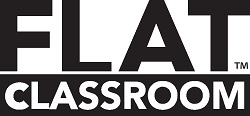While subbing today I finished reading about all the wonderful ways to incorporate technology into classrooms. I go back over my sub plans, which are based off of students completion of multiple worksheets, and try to envision how the Web based technologies that I just read about could be incorporated into this 7th and 8th grade English teachers lessons (due to the fact that my morning students were bored out of their mind with the worksheets). So here is what I took from the readings and also how I would use them in my own classroom...
Leu, Leu, and Coiro state that "It is important to understand that nearly every instructional activity you currently use in your classroom may also be used with the Internet" (2004, p. 106). This quote becomes more realistic to me with each new Web tool that I learn about. After I completed the assigned readings, I realized that this could be done with an activity as simple as the simplest Internet Workshop or as in depth as a year long Internet Inquiry with students from around the world. I really liked the concept of Internet Workshop because it seems as simple as finding computers with Internet access for your students to use (and I'm all about simplicity!). Anyways, one key aspect of this is bookmarking. Since I have already created a Delicious account, I could bookmark good sites that are related to the content of the unit. Literacy is involved with Internet Workshop because students are navigating through a website, completing an activity page (which requires students to answer OPEN ENDED questions), and sharing their discoveries and asking questions as a whole group at the end of the week or unit.
A second Web technology discussed in Leu, Leu, and Cairo's book was Internet Project. This type of technology involves "students and teachers communicating extensively about the topic that both classes are exploring" (2004, p. 116). In other words, students are able to compose a message and send it to another class of students, who read and compose their own message and send it back. The message can be about anything but Leu, Leu, and Cairo give the example of using this technology to share a morning message , which includes what students are doing in class and important events taking place. I like the idea of having a separate email account for this and giving a student the job of "Email Assistant". By switching jobs each week, every student would be able to "develop the new literacies of email" (Leu, Leu, and Cairo, 2004, p. 118). I research a few Internet Projects and found one that I thought was really fun and creative for students in primary grades to try out. The website is called Monster Exchange and it is designed to encourage reading and writing skills while integrating technology into the classroom.
A third Web. 2.0 tool that Leu, Leu, and Coiro discussed is Internet Inquiry which requires students to 1) Develop a question, 2) Search for information online, 3)Evaluate the information they find, 4) Compose an answer/presentation to their question, and 5) Share the answer with others (2004, p. 123). Literacy is also involved with this type of technology because students are provided with the opportunity to read, evaluate, write, and discuss information within content areas.
The last tool that I learned about from Leu, Leu, and Coiro's chapter was WebQuests. I found that a useful website for finding quality WebQuests was WebQuest.org. This site provides you with sample WebQuests from grades K-12 and also a list of picture books based on the topic of your search. WebQuests usually include an introduction, a task definition, a description of the process, information resources, guidance in organizing the information, and a concluding activity. Sox and Rubinstein-Avila promote the use of WebQuests in their article "WebQuests for English-Language Learners: Essential Elements for Design", by stating that "Because of their flexibility, we contend that WebQuests have great potential for accommodating diverse learners-especially ELLs- while creating academically challenging activities that encourage the development of academic language development, Internet Inquiry, and critical and higher order reasoning" (2009, p. 39). Sox and Rubinstein-Avila suggest that teachers modify their WebQuests to better meet the needs of the diverse learners in their classrooms. For example; keep sentences short with simple tenses and direct commands; use pictures to accompany text; and provide links to key word definitions. Sox and Rubinstein-Avila provide tips for how teachers should make WebQuests and alter already made WebQuests; which include links, visual elements, clear instructions, and a connection to content standards. They state that "one of the greatest strengths of the WebQuest is that it can scaffold Internet searches for students, rendering their searches more efficient and effective" (2009, p. 47). Skylar, Higgins, and Boone also support the use of WebQuests in classrooms in their article, "Strategies for Adapting WebQuests for Students With Learning Disabilities", "Research suggests that students with disabilities who use technology are more highly motivated and complete more assignments when using the technology" (2007, p. 22). They also list several tips for creating WebQuests for students with LD; use study guides, create advanced organizers, use graphic organizers, develop a partial outline, provide a list of web sites, provide a list of vocabulary words and definitions, develop a hypertext list of questions, and create a study guide with exact instructions. I would definitely use Webquests in my own classroom and look to the Internet to find one relevant to the topic I am teaching. However, I would modify the WebQuest to meet the needs of my individual students. "Webquests provide a structured and guided learning activity for students to use as they conduct research in an online environment" (2007, 27).




